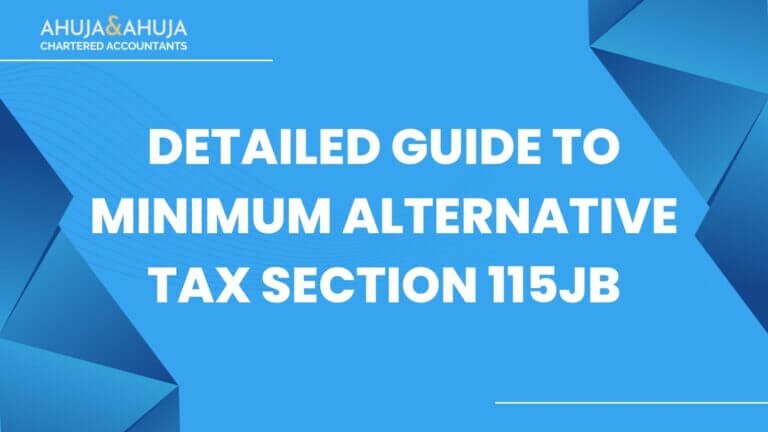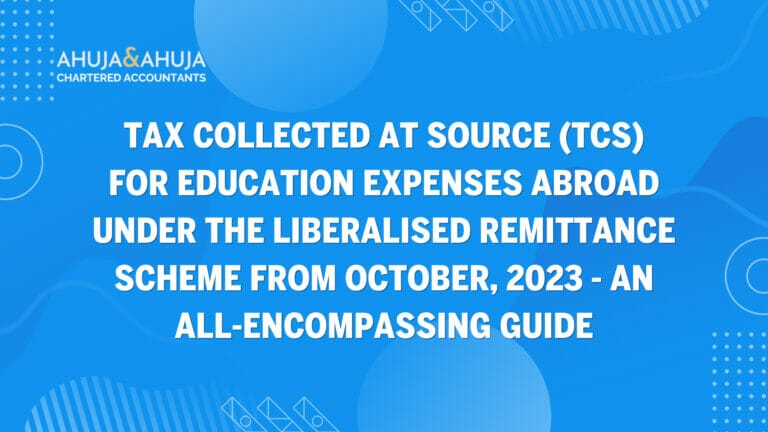Tax Loss Harvesting: How It Works in India
Tax loss harvesting is a strategic financial practice utilized by savvy investors to reduce their tax liability arising from capital gains.
By selling certain investments at a loss, investors can offset these losses against their capital gains, thereby minimizing the amount of tax owed.
This tactic is particularly useful in a diverse portfolio where some investments have appreciated in value, resulting in gains, while others might not have performed as well, incurring losses.
The concept revolves around the efficient management of tax implications on investment gains and losses.
It is crucial for investors who are considering filing their income tax returns to understand how tax loss harvesting can play a beneficial role in the broader context of tax planning and portfolio management.
Classification of Capital Assets
In order to comprehend how tax loss harvesting works in India, one must first understand the classification of capital assets and the distinction between short-term and long-term holdings:
- Short-Term Capital Assets: These are assets held for a short duration before being sold. For securities listed on recognized stock exchanges in India, such as the NSE or BSE, this period is up to 12 months. Conversely, assets like unlisted equity shares, preference shares, and immovable property are considered short-term if they are held for up to 24 months.
- Long-Term Capital Assets: These are the assets retained for a longer period before selling. The classification threshold extends beyond the durations specified for short-term assets, typically with differing criteria based on the type of asset.
Understanding the timing and category of these assets is vital because not only does it affect the rate at which gains are taxed, but it also impacts how losses can be set off against gains.
Legal Framework and Provisions
India’s Income-tax Act, 1961, contains specific provisions that govern the set-off of capital losses against capital gains:
- Short-Term Capital Losses (STCL) can be set off against both Short-Term Capital Gains (STCG) and Long-Term Capital Gains (LTCG).
- Long-Term Capital Losses (LTCL) are only allowed to be set off against Long-Term Capital Gains.
These rules ensure that while investors have a mechanism to reduce their tax burden, it must be managed under a clear structural framework to maintain fairness and compliance with tax regulations.
To further explore these concepts, and especially to understand the nuances of how capital assets are defined and taxed, taxpayers and investors might find value in consulting dedicated resources such as the guide on Capital Gains Account Scheme (CGAS) or the details on tax on dividend income.
Effective Timing and Strategic Execution of Tax Loss Harvesting
Ideal Timing for Tax Loss Harvesting
The timing of when to implement tax loss harvesting is crucial for maximizing its benefits. In India, the financial year runs from April 1st to March 31st.
To optimally benefit from tax loss harvesting, it should ideally be done before the fiscal year ends. This timing allows investors to assess their portfolios for any rebalancing that might be necessary due to changes in market dynamics or personal financial goals.
A common practice is to perform tax loss harvesting before the due date for the payment of the fourth installment of advance tax, which is on or before March 15th.
This strategic timing ensures that investors can account for any potential capital gains tax liabilities and make informed decisions about selling off assets at a loss to neutralize or reduce these liabilities.
Step-by-Step Guide to Tax Loss Harvesting
- Review Portfolio: Regularly review your portfolio to identify which assets have lost value and compare these losses against any capital gains that may have been realized during the year.
- Decide on Sell Candidates: Consider which loss-making assets to sell. This decision should factor in not only tax considerations but also the long-term potential of the investment and how it fits with your overall investment strategy.
- Execute Trades: Conduct the sell and buy orders needed to realize losses and, if suitable, reinvest in other assets that fit your investment criteria. It’s crucial to be mindful of the ‘wash-sale’ rule, which prohibits claiming a loss on a security if a substantially identical security is purchased within 30 days before or after the sale.
- Document for Tax Purposes: Keep detailed records of all transactions made for the purpose of tax loss harvesting to support your claims when filing taxes.
Benefits of Strategic Tax Loss Harvesting
- Reduced Tax Liability: By offsetting gains with losses, investors can significantly reduce their tax payable.
- Portfolio Rebalancing: This strategy provides an opportunity to realign your portfolio with your current financial goals and risk tolerance.
- Enhanced Returns: Effective tax management through loss harvesting can improve the overall returns of your investment portfolio by reducing the drag caused by taxes.
Potential Pitfalls and Considerations
While tax loss harvesting is a valuable tool for tax planning, it comes with considerations that must be carefully managed:
- Market Risk: Selling assets for tax reasons might lead to missing out on potential rebounds in those investments.
- Over-Focusing on Taxes: Investors must avoid making decisions based solely on tax considerations, which could lead to poor investment decisions.
- Compliance and Complexity: Understanding and complying with the tax laws regarding tax loss harvesting can be complex, and errors can lead to unintended tax consequences.
Seeking Professional Advice
Given the complexities involved, it is advisable for investors to consult with tax professionals or financial advisors who can provide personalized advice and help navigate the intricacies of tax loss harvesting.
Conclusion
Tax loss harvesting is a sophisticated strategy that requires meticulous planning and timing. By understanding the nuances of this approach, investors in India can effectively use it as a tool to enhance their financial health and tax position.
Practical Implementation and Long-term Strategy of Tax Loss Harvesting
Real-life Examples of Tax Loss Harvesting
To better illustrate the concept of tax loss harvesting, let’s consider a few hypothetical scenarios:
- Example 1: Offsetting STCG with STCL
Suppose an investor has earned a short-term capital gain (STCG) of INR 50,000 from an asset held for less than a year. Meanwhile, another asset in the portfolio, also held for less than a year, has incurred a loss of INR 20,000. By selling the loss-making asset, the investor can reduce the taxable STCG from INR 50,000 to INR 30,000, thereby lowering the overall tax liability.
- Example 2: Offsetting LTCG with LTCL
Imagine an investor who gains INR 100,000 on a long-term asset. Another part of the portfolio includes a long-term asset that has lost INR 40,000. By selling the asset that incurred a loss, the investor can decrease the taxable long-term capital gain to INR 60,000. This strategic move helps in saving tax on a significant amount of long-term capital gain.
These examples demonstrate how strategic selling can help in optimizing the tax obligations based on the nature of the capital gains and the duration the assets were held.
Continuous Portfolio Monitoring and Adjustment
Successful tax loss harvesting doesn’t just happen at the end of the financial year but is a continuous process. Regular monitoring of the performance and tax implications of your investments ensures that you can make informed decisions throughout the year.
This proactive approach allows investors to adjust their strategies based on market conditions and tax laws, which might change from year to you.
Enhancing Long-term Investment Strategies with Tax Loss Harvesting
While tax loss harvesting can offer immediate benefits like tax savings, its true value is realized when incorporated into a long-term investment strategy.
Here’s how it makes a difference:
- Facilitates Risk Management: By rebalancing the portfolio regularly through tax loss harvesting, investors can manage risk more effectively by reducing exposure to declining assets.
- Encourages Discipline in Investing: Regular evaluation of the portfolio for tax loss harvesting purposes keeps investors actively engaged with their investments, promoting a disciplined approach to buying and selling assets.
- Supports Goal-Oriented Investments: Aligning tax loss harvesting strategies with long-term financial goals ensures that investment decisions contribute to broader financial planning ambitions, whether it’s retirement, buying property, or funding education.
Conclusion
Tax loss harvesting is a sophisticated tax and investment strategy that maximizes financial outcomes by skillfully managing potential tax liabilities.
It requires a thorough understanding of financial markets, tax laws, and personal investment goals. Therefore, it’s advisable for investors to consult with specialized financial or tax professionals to tailor the strategy to their unique circumstances and ensure compliance and optimization.
Remember, while tax loss harvesting can significantly influence your tax returns and investment health, it should be one part of a comprehensive financial strategy.
Effective financial planning involves considering various other aspects like retirement planning, emergency funds, and more, ensuring that all financial decisions are well-rounded and future-proof.
As we continue to explore tax strategies and their implications, always remember to stay informed, stay disciplined, and seek expertise when necessary.
Your financial well-being is a journey, not a sprint, and methods like tax-optimal strategies should be used wisely and judicious doubly within a broader plan.
Disclaimer
The materials provided herein are solely for educational and informational purposes. No attorney/professional-client relationship is created when you access or use the site or the materials. The information presented on this site does not constitute legal or professional advice and should not be relied upon for such purposes or used as a substitute for professional or legal advice.





